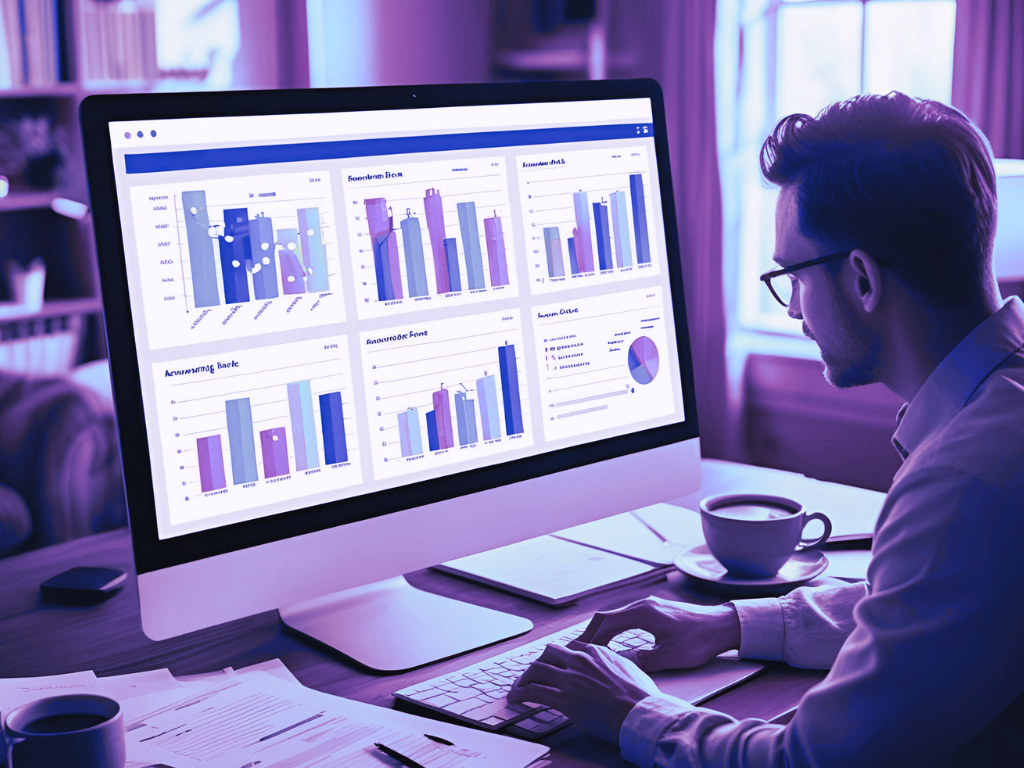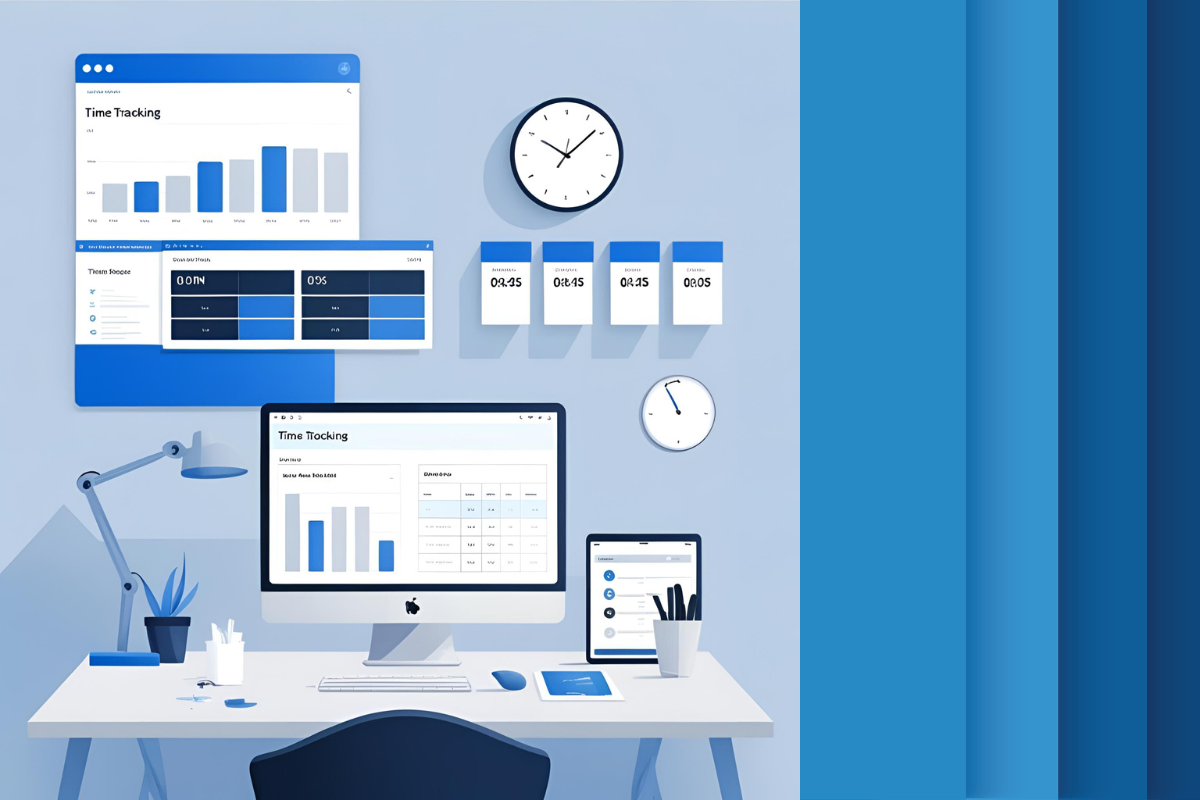Waiting for financial data is like driving with a foggy windshield—by the time you realize you’ve veered off course, it’s already too late. Today’s agencies can’t afford to make decisions based on last month’s numbers. With shrinking margins, growing demands, and tighter timelines, clarity in the moment isn’t optional—it’s essential. That’s why we’ve made real-time financial forecasting a foundational element of Accountability. By eliminating the delay between action and insight, we help agencies navigate confidently, correct course early, and capitalize on opportunities as they arise.
From Gut Checks to Ground Truth: Live Job Profitability Reports
Creative decisions often move fast, but financial clarity traditionally lags behind. And without real-time job-level reporting, it’s difficult to know how each project is performing until long after it wraps.
That’s where Accountability steps in. Our software offers live profitability reports for every job, showing how actuals compare to estimates at any point in the project lifecycle. These reports are updated continuously, not just at month-end, so agencies can adjust workloads, reallocate budgets, or revisit scopes before profitability is compromised. We believe job-level data should be as agile as your creative teams—and that starts with visibility you don’t have to wait for.
Capturing the Cost Curve: Real-Time Expense Tracking
Expenses don’t trickle in neatly on a schedule—they spike, shift, and occasionally surprise. When costs are tracked manually or delayed in processing, agencies lose valuable time identifying risks or overruns.
With Accountability, real-time expense tracking ensures that every dollar spent is reflected in your financial view the moment it’s recorded. Whether it’s a freelancer invoice, a vendor bill, or internal labor costs, the platform syncs expense data across systems to provide up-to-the-minute insights. This immediacy turns lagging indicators into leading ones—giving finance teams the ability to act rather than react.
Seeing the Road Ahead: Up-to-Date Revenue Forecasts
Forecasting should never feel like educated guesswork. Yet for many agencies, revenue projections rely heavily on static spreadsheets or delayed input from department leads. That disconnect can lead to missed opportunities or unexpected shortfalls.
We designed Accountability to bring revenue forecasting into real-time. By integrating live data from jobs in progress, retainer schedules, and incoming work, our platform creates accurate projections that evolve with your pipeline. This empowers leadership to plan resourcing, cash flow, and growth strategies with far greater confidence. Financial forecasting becomes less about intuition and more about precision.
Managing What’s in Motion: Instant WIP Reports
Work in Progress (WIP) is more than a balance sheet line item—it’s a pulse check on how much work is underway, how much has been earned, and how much can be invoiced. Delayed or incomplete WIP reports distort that view, leading to billing lags or missed revenue recognition.
Accountability delivers instant access to WIP insights across clients, jobs, and departments. Our system continuously calculates earned revenue based on actual progress and billing schedules, ensuring finance and client service teams stay aligned. With this data at their fingertips, teams can have timely conversations about billing cycles, performance metrics, and project pacing—all grounded in real-time context.
Seeing the Bigger Picture Instantly: Financial KPIs in Real Time
You shouldn’t need to build a custom dashboard or export spreadsheets just to understand your own business. And you definitely shouldn’t have to wait for finance to run the numbers. That’s why Accountability provides immediate access to core financial KPIs that reflect the current state of your agency.
From gross margin and overhead ratios to billability and utilization, these metrics are calculated dynamically, updated in real time, and accessible across teams. Whether you’re in a leadership meeting or evaluating an internal initiative, the data you need is already available. And when KPIs are connected to live operations, insights become actions—without delay.
Why Real-Time Matters for Financial Forecasting
Most agencies already understand the value of financial forecasting. But forecasting that’s based on outdated or incomplete data doesn’t actually reduce risk—it just shifts it. Real-time insights, on the other hand, ensure decisions are grounded in current realities.
At Accountability, we’ve built our platform to provide financial forecasting that evolves as your work does. Whether you’re responding to client requests, reallocating staff, or adjusting revenue expectations, our software adapts in sync. That agility not only improves accuracy—it empowers leadership to act with conviction.
Seamless Sync Across Teams and Tools
Real-time data is only powerful if it’s trustworthy. And that requires integration, not isolation. Accountability works in tandem with the systems agencies already use—from time tracking to workflow management—to pull financial and operational data into one clear, connected source of truth.
This seamless sync eliminates manual re-entry, reduces errors, and ensures your financial forecasts reflect what’s really happening on the ground. When tools talk to each other, your business intelligence gets sharper—and your forecasting becomes a shared language across departments.
From Reaction to Precision: Make Real-Time Financial Data Part of the Plan
The pace of agency life isn’t slowing down, and your financial insights shouldn’t be stuck in the past. At Accountability, we believe agencies deserve better than generic reporting cycles and delayed visibility. We’ve built a solution that delivers dynamic, real-time financial forecasting and reporting—because the best decisions are made when you can see the whole picture, exactly when you need it.
See how Accountability can help you move faster, plan smarter, and forecast with confidence.









